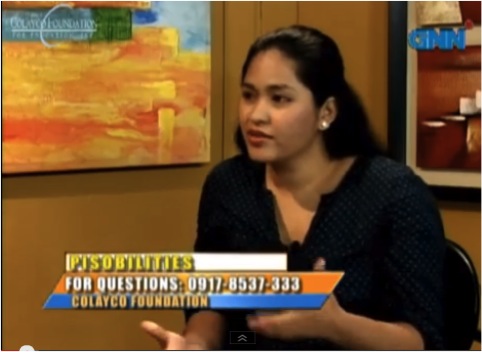ni: Francisco J. Colayco
*Unang lumabas sa Bulgar noong Nobyembre 15, 2012
“May tanong po ako. Simula noong una akong nag-email sa inyo, sinimulan kong basahin ang inyong mga blog at Youtube videos. Nalaman kong ang pinakapundasyon ay ang Sampung Utos at ito ang nilalaman ng unang libro ninyo. Pakitama na lamang po kung nagkakamali ako, pero sa pagkakaintindi ko, ang assets ay ang “insurance at investments.” Kailangan nating palaguin ang mga assets na ito.
Hindi na ako masyadong nalilito ngayon. Ang punto ng lahat ng ito ay mag-ipon at mamuhunan.
Ano pa ang maituturing na assets?”
Sagot:
Maraming klase ng asset na hindi pampinansiyal. Halimbawa, ang  koneksiyon sa Maykapal ay isang napakalaking asset dahil nagkakaloob ito sa atin ng mas masaya at mas mapayapang buhay. Maituturing din na asset ang kalusugan at kagandahan ng pisikal na anyo.
koneksiyon sa Maykapal ay isang napakalaking asset dahil nagkakaloob ito sa atin ng mas masaya at mas mapayapang buhay. Maituturing din na asset ang kalusugan at kagandahan ng pisikal na anyo.
Pero dapat maging malinaw sa iyo na pinansiyal na asset ang pinag-uusapan natin dito. Nakakatulong ang asset na mapalago ang kayamanan. Nagbibigay ng pera sa ating bulsa ang mga asset. Hindi maituturing na asset ang anumang hindi nagdudulot o magdudulot ng pera. Kung nalilito, laging balikan ang simpleng depinisiyon na ito.May mga bagay na inaakala nating asset pero hindi naman pala.
Gawin nating halimbawa ang insurance coverage. Depende sa pakinabang nito sa kasalukuyan o kinabukasan, posibleng maging asset ang insurance pero posible rin namang hindi. Sabihin na nating mayroon kang normal na life insurance. Kung ang premium ay nabayaran sa tamang oras, aktibo ang iyong insurance at may matatanggap ang iyong mga mahal sa buhay kung pumanaw ka na. Sa puntong ito, maituturing na asset ang insurance na ito kahit hindi ito nagdadala ng pera ngayon. Pero kung tutuusin, pwedeng sabihin na nababawasan ka ng pera dahil sa pagbabayad ng premium.
Ito ang dahilan kung bakit dapat analisahin ang sitwasyon. Bakit mo binili ang insurance? Hindi ba’t para makatanggap ng pera ang iyong mga mahal sa buhay (beneficiaries) kapag wala ka na? Ibig sabihin, ikaw ang tumutustos sa iyong mga mahal sa buhay kaya magkakaroon sila ng malaking problema kung wala ka na. Kung hindi naman sila umaasa sa kita mo, hindi ko makita ang punto kung bakit ka bumili ng insurance para sa kanilang kapakanan.Sa madaling salita, sa ganitong kaso, hindi maituturing na asset ang insurance. Ibang kaso naman siyempre kung may insurance ka bilang pagsunod sa patakaran ng iyong employer o ng bangkong inutangan mo. Sa ganiyang sitwasyon, maituturing na asset ang insurance.
Sa sandaling huminto ka sa pagbabayad ng premium ng life insurance, kailangan mong malaman kung may halaga pang natitira sa insurance o talagang wala na. Basahin nang mabuti ang insurance document. Ang asset mo sa insurance ay nakadepende sa halagang natitira.
Para sa karagdagang impormasyon, basahin at pag-aralan ang aking mga libro at ang aming website (www.colaycofoundation.com ) at tingnan ang aming seminars.
 Active and passive incomes are simple enough to understand. Active income is earned when one is working. In his article, the student recalled chatting with his colleagues about their personal lives. Most of them were from the province. They came to Metro Manila to earn a living. Although they were lucky to land a job at SM, they are highly fearful of the future. SM is known to be one of the major contractual employers in the country. After six months of working, most people find themselves out of work again. Thus, they need to find another job elsewhere.
Active and passive incomes are simple enough to understand. Active income is earned when one is working. In his article, the student recalled chatting with his colleagues about their personal lives. Most of them were from the province. They came to Metro Manila to earn a living. Although they were lucky to land a job at SM, they are highly fearful of the future. SM is known to be one of the major contractual employers in the country. After six months of working, most people find themselves out of work again. Thus, they need to find another job elsewhere. working. It serves as the partner and alternative to active income. When one is still working, it’s imperative that he/she is able to save and earn from his savings as well. This way, his/her savings generate more money. Once somebody cannot work anymore, passive income replaces the role of active income in sustaining one’s lifestyle. In effect, one can still live comfortably even if one is not working anymore. Sadly, most adults only realize the importance of passive income during the latter moments of their lives.
working. It serves as the partner and alternative to active income. When one is still working, it’s imperative that he/she is able to save and earn from his savings as well. This way, his/her savings generate more money. Once somebody cannot work anymore, passive income replaces the role of active income in sustaining one’s lifestyle. In effect, one can still live comfortably even if one is not working anymore. Sadly, most adults only realize the importance of passive income during the latter moments of their lives.

 Bilang paggunita sa Buwan ng Wika, inimbita akong magbigay ng talumpati sa Kongreso ng Wikang Filipino sa Pamantasang Ateneo de Manila noong ika-20 ng Agosto. Ang aking paksa ay tungkol sa papel ng wikang Filipino para sa maunlad na negosyo. Nasa baba ang nilalaman ng aking talumpati. Nandito rin ang mga slides na ginamit ko:
Bilang paggunita sa Buwan ng Wika, inimbita akong magbigay ng talumpati sa Kongreso ng Wikang Filipino sa Pamantasang Ateneo de Manila noong ika-20 ng Agosto. Ang aking paksa ay tungkol sa papel ng wikang Filipino para sa maunlad na negosyo. Nasa baba ang nilalaman ng aking talumpati. Nandito rin ang mga slides na ginamit ko: 

 Curious about your money habits? Want to know the pro’s and cons of how you handle your money? Why not try the following quiz to find out:
Curious about your money habits? Want to know the pro’s and cons of how you handle your money? Why not try the following quiz to find out:

